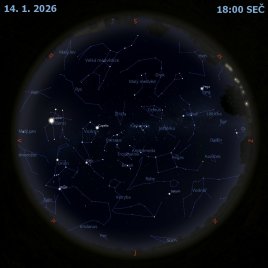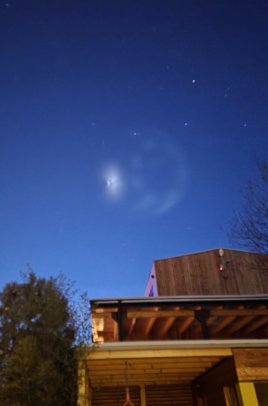Apollo 11: Sestup a přistání na Měsíc
Uznání videa: NASA, Apollo Flight Journal Compilation & Copyright: W. David Woods
Nikdy předtím se to nestalo. Ale po slovech "můžete jít na přistání" ("You're Go for landing") tuto sobotu před 50 lety se kosmonauté Apolla 11 Aldrin a Armstrong o to mohli poprvé pokusit. Příštích několik minut bylo více než dramatických, jelikož se pod nimi objevilo nečekané pole balvanů a příliš strmý kráter. Armstrong se klidně vznášel pomocí raketového motoru s ubývajícím palivem nad lunárním povrchem a přitom hledal ploché a čisté místo pro přistání. Zbývalo pouze pár sekund paliva, za pomoci Aldrina a řídícího střediska předávajícího údaje, Armstrong konečně bezpečné místo našel a Orla tam posadil. Mnoho lidí na Zemi živě poslouchalo celou konverzaci a s úlevou a nadšením uslyšeli, že Orel přistál ("The Eagle has landed") a lidé poprvé přistáli na Měsíci. V tomto videu o sestupu a přistání jsou zkombinovány dva zvukové záznamy, videozáznam podobný tomu, co viděli kosmonauté, texty dialogů a údaje o náklonu přistávacího modulu. Video končí panorámatem lunární krajiny, která byla vidět venku. O pár hodin později mohli stovky miliónů lidí na celé Zemi, spolu jako jeden sledovat, jak jedni z nich kráčejí po Měsíci.
Seznam odkazů v popisu
- NASA: Aldrin
- NASA: Armstrong
- NASA: Apollo 11 Video Library
- NBCnews.com: Apollo 11 Plus 45: How Neil Armstrong Saved the Day on the Moon
- Wikipedia: Neil_Armstrong
- Wikipedia: Buzz_Aldrin
- SpaceCenter.org: Space Center Houston
- NASA: Apollo 11 Lunar Module / EASEP - NSSDCA/COSPAR ID: 1969-059C
- NASA: Moon
- Youtube.com: Apollo 11: The Complete Descent
- APOD: 2012-08-30 Panoráma místa přistání Apolla 11
- NASA: Lunar module
- Wikipedia: Apollo_11_in_popular_culture#Public_reception
- NASA: Earth
NASA Official: Phillip Newman Specific rights apply. NASA Web Privacy Policy and Important Notices
A service of: ASD at NASA / GSFC & Michigan Tech. U.
Odkaz na originální APOD


